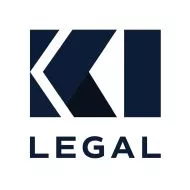On March 27, 2020, Congress passed the Coronavirus Aid, Relief, and Economic Security Act, aka the "CARES Act," which included stimulus programs and regulatory initiatives in several areas to combat the effects of the pandemic on small businesses and individuals. The CARES Act established several government lending programs, made amendments to federal employment laws and the Bankruptcy Code, and offered mortgage and real estate relief to borrowers, as well as relief to financial institutions, to name a few. The CARES Act is extensive and therefore will not be covered in its entirety in this article. Today, we focus on the Small Business Stimulus Program and expansion of employee rights.
The CARES Act offered a stimulus package for small and medium-sized businesses, including temporary changes to two significant types of loans provided by the U.S. Small Business Administration ("SBA"): 1) the Paycheck Protection Program and 2) the Economic Injury Disaster Loan.
The Paycheck Protection Program
The Paycheck Protection Program ("PPP") is designed to help small businesses retain employees by providing partially or fully forgivable loans to cover payroll and certain other operating expenses. Loans that were 2.5x the borrower's average monthly payroll are forgiven if at least 60% of the loan was used to cover payroll expenses. The Consolidated Appropriations Act, which was discussed in our previous article, authorized second draw PPP loans.
The Economic Injury Disaster Loan
The Economic Injury Disaster Loan ("EIDL") provided working capital to small businesses, expanding the existing SBA Economic Injury Disaster Lona Program. It provided low interest loans to small businesses to cover payroll and other operating costs. Loans up to $2 million were available based upon financial need and actual economic injury. EIDL loans are not forgivable, and the SBA required that individuals (often the business's owner) personally guarantee loans in excess of $200,000.
Today, the legal landscape is inundated with businesses struggling to pay back the EIDL loans, and the situation is exacerbated where individuals are on the hook for debt repayment via their personal guarantees.
The Community Advantage Recovery Loan Program
Finally, the Community Advantage Recovery Loan Program provided loans and technical assistance to small business in underserved areas. The program assisted small businesses with adjusting their business models for the pandemic to build financial resiliency, including receiving at least 15 hours of technical assistance from lenders to help the borrower build the resiliency.
Moreover, the CARES Act provided and expanded certain employee rights, including:
- expanding unemployment insurance benefits,
- offering pandemic unemployment assistance,
- unemployment compensation,
- and making state imposition of these requirements a condition of federal funding.
The CARES Act certainly provided relief in the moments the U.S. economy and American business owners needed it the most. Today, however, as loans exit deferment periods and relief programs become remnants of the past, small business are faced with mounting debt in an environment that has not fully recovered from the pandemic.
The content of this article is intended to provide a general guide to the subject matter. Specialist advice should be sought about your specific circumstances.


